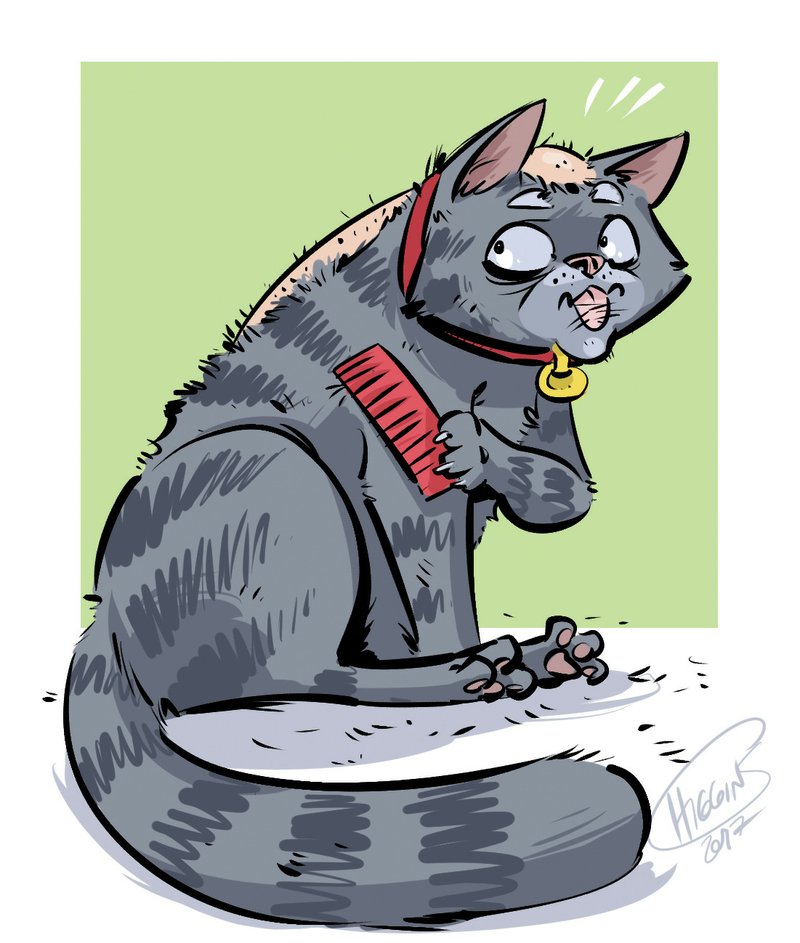Terry from Modesto, Calif., takes care of Beemer, a 6-year-old cat that spends most of his time in the house. Terry works from home, spending a lot of time with Beemer, and has noticed over the past couple of weeks that he has developed some hair loss along his back. His skin in the area also feels bumpy when Terry pets Beemer. He is apparently healthy in every other respect with no change in his appetite or activity, and he is as playful as ever.
The first thing to determine is whether the hair is falling out or being removed. True hair loss from the hair follicle is much less common than removal of the hair by the patient. The potential causes for true hair loss are often hormonal and can be difficult to figure out. I suspect Beemer does not have true hair loss.
A good way to determine what's causing hair loss is to look at the hair. If on close examination you can find broken hairs, the hair is not falling out, it is being chewed or otherwise traumatized. With true hair loss, or alopecia, we usually see very little, if any, hair in the area of concern.
I am going to assume Beemer has broken hairs and thinning as a result of self trauma. Support for that comes from Terry's description of bumps on Beemer's skin, likely scabbing from his chewing.
Terry does not report seeing Beemer chew himself -- frankly, that's common in these cases. Cats often hide the behavior until it gets very bad.
Assuming Beemer is chewing himself, what Beemer has is miliary dermatitis, which is not a diagnosis but a descriptive term. Why is Beemer chewing himself and causing miliary dermatitis?
In California, the most common cause in cats is allergies. Since Beemer's miliary dermatitis is along his back, it's most consistent with an allergy to fleas.
Caretakers often become defensive when I tell them their companion's condition is likely caused by a flea problem. But I look at it much differently: A flea problem is something to be glad about, especially when looking at other possible allergic conditions. Thanks to medications to kill fleas, a total cure is possible.
With cats like Beemer, it can be hard to find fleas on their bodies because their hyper responsiveness -- chewing and scratching -- removes a lot of the invaders. Treatment still focuses on flea destruction and prevention, and I also treat these cats with anti-inflammatory medication to stop the allergic response, bringing much needed relief.
The message I want to deliver here is that companions having fleas is not something to be ashamed of or in denial about, but instead is something to embrace. We can cure fleas and prevent them from coming back. That, my friends, is a good thing.
Jeff Kahler is a veterinarian in Modesto, Calif. Questions can be submitted to Your Pet in care of LifeStyles, The Modesto Bee, P.O. Box 5256, Modesto, Calif. 95352.
Family on 09/27/2017

